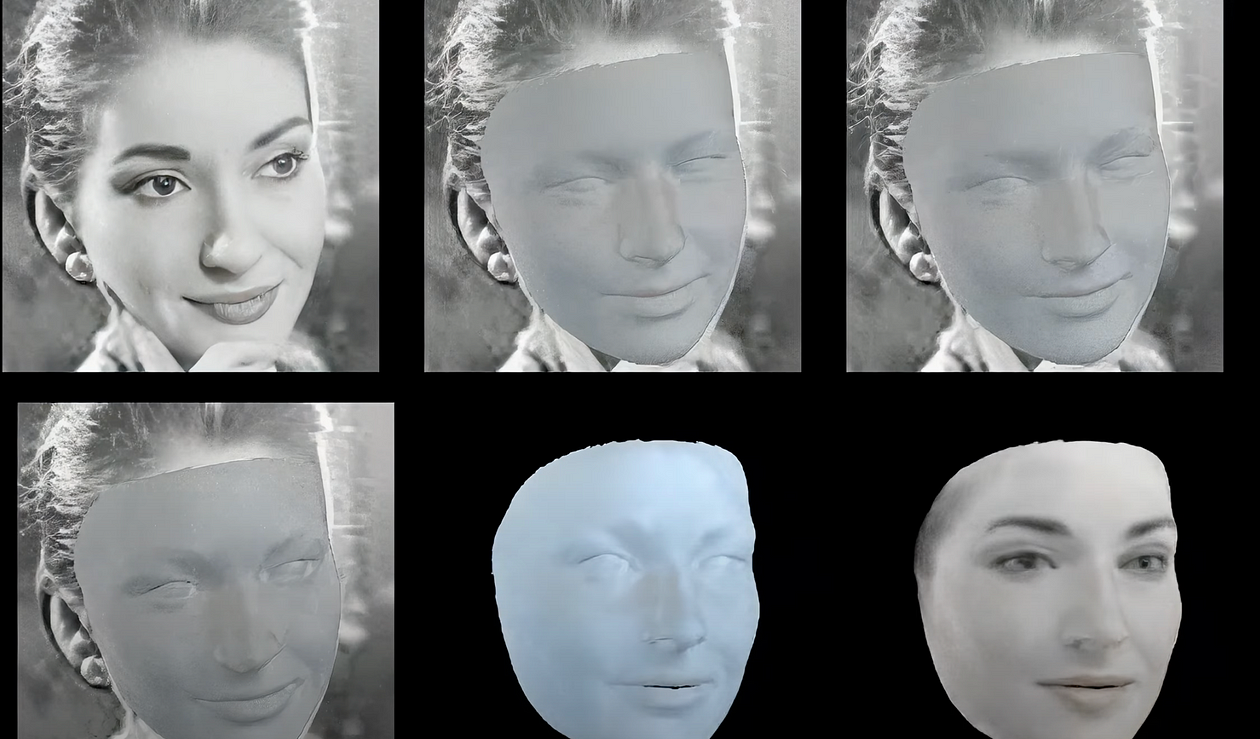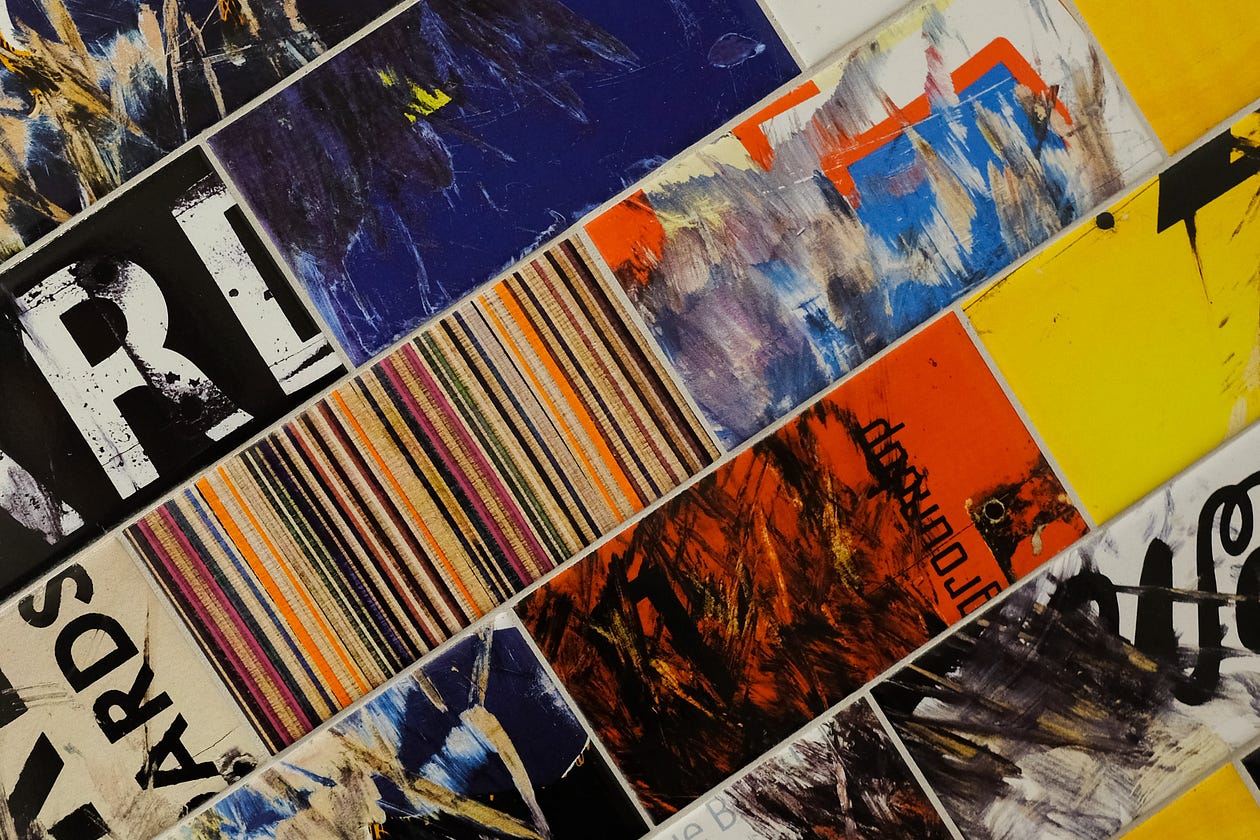AI and the end of photographic identity

Photography can no longer represent our identity. Our identity can no longer be represented by the two-dimensional flat surface of a photographic image alone. Photography has had its day. The photograph as a referent of our identity will be replaced by an AI Hologram.
AI technology allows us to maintain present and infinite dialogue with our dead.
Death is at the heart of photography. We cling to these images of the dead as evidence of them once being alive. We pour over the flat surfaces of our dead loved ones wanting more than a photograph can ever give. In death, we are left behind in unsatisfied grief. But photography will no longer be the portal to the dead. How we deal with grief is challenged in the digital age where the dead are resurrected and converse with us. New stages of grief are triggered by interactive technology that enables us to maintain a two-way relationship with the dead. In grief therapy, letting go is replaced by the continuing bonds approach where grief is present and infinite and is worked through with the constant presence or dialogue with the dead.
A photograph is an image of or a representation of or a copy of or a likeness of a person.
In the 21st century digital world our identity is represented by multiple forms of technology. In addition to photography — digital video, social media posts, text messaging, and online writing — artificial intelligence is designed to replicate and converse with us. Taken together they form a fuller picture of who we are. From this online data, a narrative is constructed to produce a multimedia autobiography rather than a single portrait but one that is still limited to one-way interaction. Two-way interactive technology will be possible and affordable and easy to use and a fully interactive machine learning AI hologram will replace the portrait photograph.
Photography helps us address from the inside the question of ontology, of being, while technology addresses the surface. Roland Barthe’s approach to truth or essence in photography was the invisibility of the medium. We only see the referent. The photograph produces to infinity what has occurred only once an event of the real. The problem for Barthes is that realism is part of the problem of classification and classification is always external to the object of photography with no relation to its essence. In the Virtual Life of Photography, Sarah Kember writes that:
“photographs can only be different in degree, but photography is a difference in kind.”
What Photograph Is Not
Rashed Haq explores our idea of what photography is in the 21st century from a technological point of view. He criticizes photo theorists’ inability to address new forms of image making that are photographed in name only. He creates a series of family portraits using GAN-generated machine learning software that produce a series of shapes and contours. Using family portraiture for his theory is misplaced because the images bear no resemblance to the original and miss the point of portraiture and perhaps photography altogether.
Raq only considers the technological differences in the photographic process that constantly redefines photographic production. But the definition of photography is a historical argument that resurfaced when digital replaced analog technology. By focusing on the technological process of capturing a portrait image, Raq misses the point of why photography still exists today as a representation of who we are. The changes in portrait technology are market driven by our need to bear witness to our existence and be remembered.
Kodak Memories
The photographs I treasure are the Kodak snaps of me as a newborn baby with my mother and father in Los Angeles. I of course have no memory of this event. It is my imagination or perception from second-hand memories handed down to me by my parents that give meaning to these images. Photographs do not move, they make static moments and briefly spark a memory and momentarily remind us of life and death.
The existence of memory within the photograph exists in abstract terms between the subject who remembers and the object, in this case, the photograph, that sparkles the remembrance. Memory exists virtually. Kember also argues that photography theory is stuck in a historical separation between disciplines that do not address what photography has become in the 21st century and needs to be examined by new media, science, and technology studies (STS).
One of the false problems in debates on photography is the failure to distinguish between virtual memory and actual memories. Photography is marketed as a memory keeper. Actual memories are real but not in photography or in specific photographs, they are virtual memories, referents of objects that spark memories, vessels, reciprocals, talismans, icons, symbols, and trophies.
To find out what photography is it is necessary to look at various debates in new media, science, and technology. Barthe’s Winter Garden Photograph does not capture a memory of his mother because he wasn’t there. Rather it actualizes his memory of her by what he calls affect and Bergson calls intuition. Barthes is lost in the grieving process and looks for her but he can only find her in the Winter Garden photograph and not in the medium of photography. He only sees the referent and his search for the essence of her is driven by grief which fogs his search for the essence in photography itself. Photography theory has been preoccupied with:
“perception, representation, knowledge, power, subjectivity” Foucault.
Photography can never be new or revolutionizing because new technologies don’t create new uses. The history of photography as a visual technology and its social and economic uses. The onset of digital photography created a false revolution. It deals with the exteriority of photography. Whether we use a smartphone or a mirrorless camera to produce a picture the endpoint is still the same.
The Real Revolution
I believe the real revolution is coming in the form of artificial intelligence that is evolving from technological advancement and consumer needs that will create an AI referent and replace the photograph as the object of our identity. This consumer need is driven by grief. Gradually, we are finding ways to reconnect with our dead loved ones and increasingly we have found that a single photograph does not satisfy our grief. We are at a turning point. Our desire to stay connected to our dead using one-two-way interactive technology is the primary default of our inability to deal with death.
American-Brit Ginger Liu is the CEO/Founder of Ginger Media & Entertainment and a Ph.D. student in photography and artificial intelligence. She is a journalist and author, photographer, and filmmaker.







